Types of Operating System: In computer science, the Operating System (OS) is defined as software that is treated as an interface between the parts of the computer hardware system and the computer user. All computer systems necessarily have a minimum of a single operating system to run computer programs easily. Computer applications or programs such as Browsers, MS Office, Notepad Games, etc. require a medium to execute their tasks. OS assists one to interact with the computer system without having knowledge about the computer’s language. Without OS, not any computer system can be operated by the user. In this article, you will learn more about the operating system, the types of the operating system, and the features of the operating system in detail.
Features of Operating System
An operating system (OS) was developed in the late 1950s, for the first time, to organize tape storage. OS started to utilize disks in the mid-1960s. The first version of the Unix OS was developed in the late 1960s. Microsoft created its first OS named DOS. In 1985, the common OS used today named Windows first came into existence when a GUI (Graphical User Interface) was built and linked with MS-DOS. There are several features of OS as mentioned below.
1. Facilitating the protected and supervisor mode of the computer system.
2. Allowing for disk access and file systems to enable networking security of device drivers.
3. Enabling the program execution system.
4. It has a memory management facility and virtual memory multitasking system.
5. Handling Input output operations of the computer system.
6. Manipulate the file systems in the computer.
7. Handling and detecting errors if found in the computer.
8. Allocating the resources and computer data.
9. Enabling information and resource protection in the computer system.
Types of Operating System
There are different types of operating systems (OS) that performs various functions like organizing memory, files, processes, input-output system & devices, security, etc. Some of the main types of operating systems are explained below in detail.
1. Batch Operating System
This operating system (OS) does not communicate directly with the computer system. This operator sorts jobs with the same requirements and groups them into many batches.
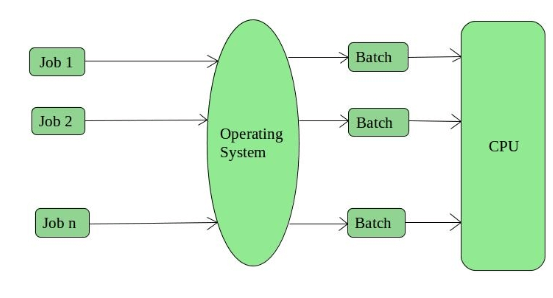
Advantages of Batch OS
1. Difficult to predict the time needed for any job to be completed. Its processors know how long the job would be if it is in the queue.
2. Multiple users can avail of the sharing facility of this batch OS.
3. Very less idle time is present in it.
Disadvantages of Batch OS
1. The operators should be familiar with the batch operating systems.
2. It is difficult to debug the system.
3. It is sometimes an expensive computer system.
Examples of Batch-based OS are Payroll systems, Bank Statements, etc
2. Time-Sharing Operating Systems
Every task is allotted some time frame to perform functions so that all tasks are operated smoothly. Every computer user takes the CPU processing time as they generally use one system. It is also called Multi-tasking System. The task can be executed by a single user or several users. The quantum refers to the time period that every task takes to perform.
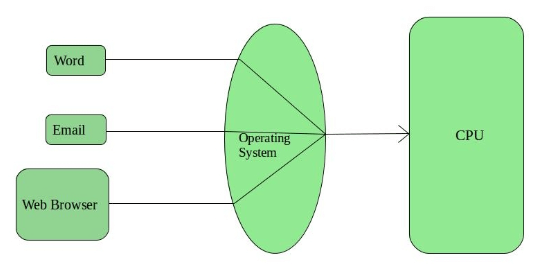
Advantages of Time-Sharing OS
1. Equal opportunity is given to every task performed.
2. Very less chances of software duplication in it.
3. The CPU idle time of the system can be reduced.
Disadvantages of Time-Sharing OS
1. Problem related to reliability.
2. Taking care of the security and integrity of computer user programs and data is compulsorily needed here.
3. There is a data communication and interaction problem.
3. Distributed Operating System
This operating system is the latest OS in the world of computer technology. This OS is now widely accepted across the world. Many autonomous interlinked computer systems interact with one another with the help of shared communication networking systems. It usually has its own memory unit and CPU (Computer Processing Unit). It is generally considered as loosely coupled systems or distributed computer systems.
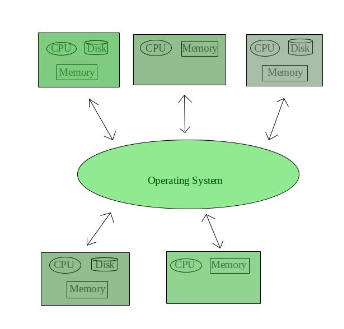
Advantages of Distributed OS
1. The data exchange speed is increased by electronic mail.
2. The computation speed is more as well as durable enough in this system as the resources are shared it.
3. Load on the host computer system is lesser.
Disadvantages of Distributed OS
1. If the main network is failed to work then the entire communication system will be stopped.
2. The language used to build distributed systems is not properly defined yet.
3. It is not available abundantly as it is also costly and complex in nature.
An example of Distributed OS is mainly LOCUS.
4. Network Operating System –
This operating system operates on a server and enables the organisation of data, users, groups, security, applications, etc. It allows shared access to files, printers, etc. over a small private network. In this system, all computer users are familiar with the inbuilt configuration within the network and their individual connections. Hence it is famously called the tightly coupled system.
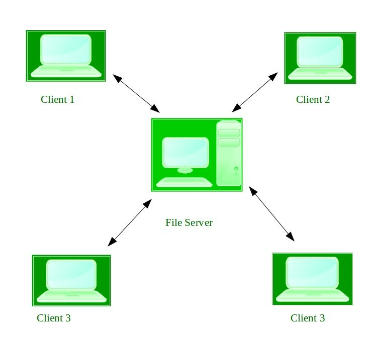
Advantages of Network OS
1. It has a highly stable centralized server system.
2. Servers handle and manage security concerns.
3. Advanced technologies and the new versions of the hardware are easily integrated with the system.
Disadvantages of Network OS
1. Servers used in this OS are costly in nature.
2. Computer user has to rely on the central position for most functions.
3. There is a need for regular care about its maintenance and updates.
Examples of Network OS are Microsoft Windows Server 2003, Microsoft Windows Server 2008, UNIX, Linux, etc.
5. Real-Time Operating System
This operating system acts as a real-time system. In this OS, a very less time period is needed to process the system and respond to inputs. This time period is known as response time. It can be of two types namely Hard and Soft Real-time OS.
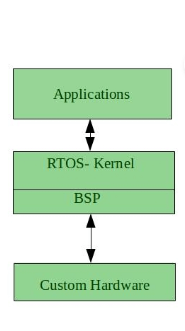
Advantages of Real-time OS
1. As the size of computer programs is small under this OS, the RTOS can also be employed in embedded systems like transportation.
2. It is considered an error-free OS.
3. Memory allocation is best organized in it.
Disadvantages of Real-time OS
1. It can operate only a few tasks at the same time.
2. Sometimes its system resources are not proper so it becomes a costly OS.
3. The complex algorithms are involved in it so it is difficult for the designer to write it again.
Examples of Real-Time Operating Systems are Scientific experiments, medical imaging systems, industrial control systems, weapon systems, robots, air traffic control systems, etc.
